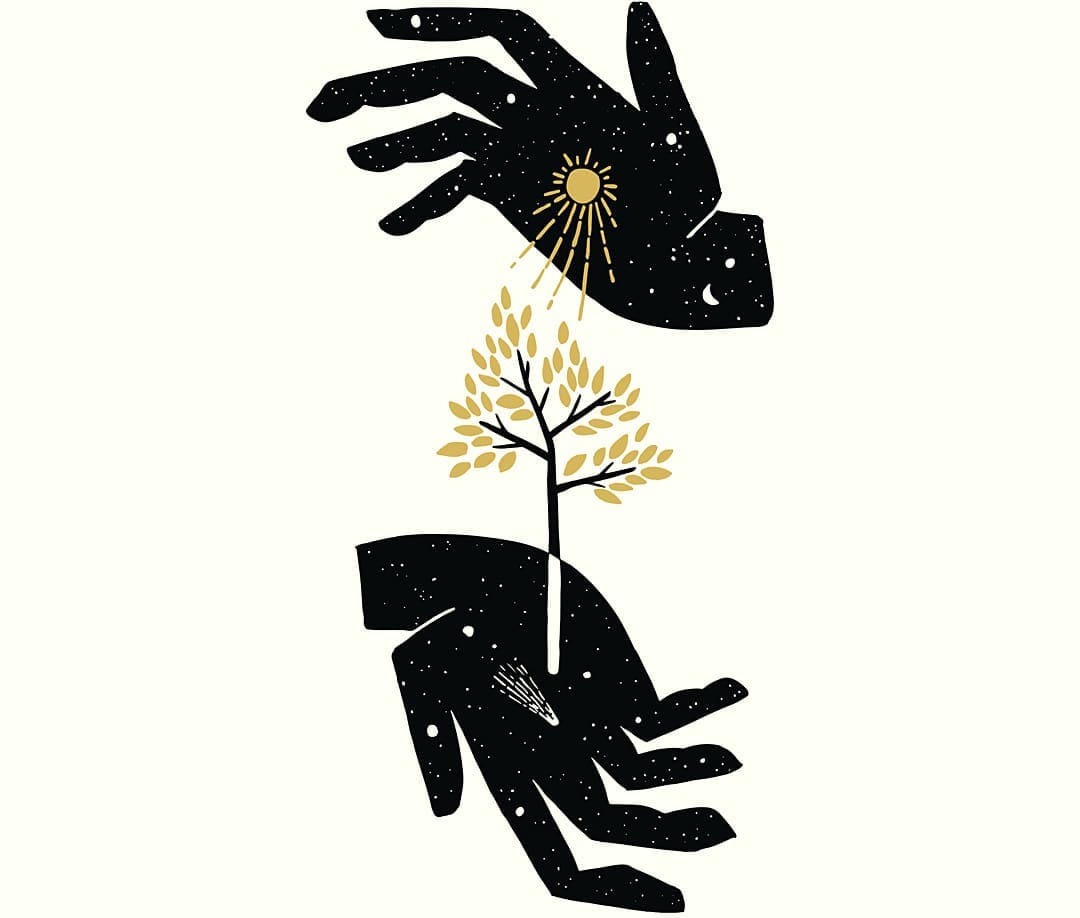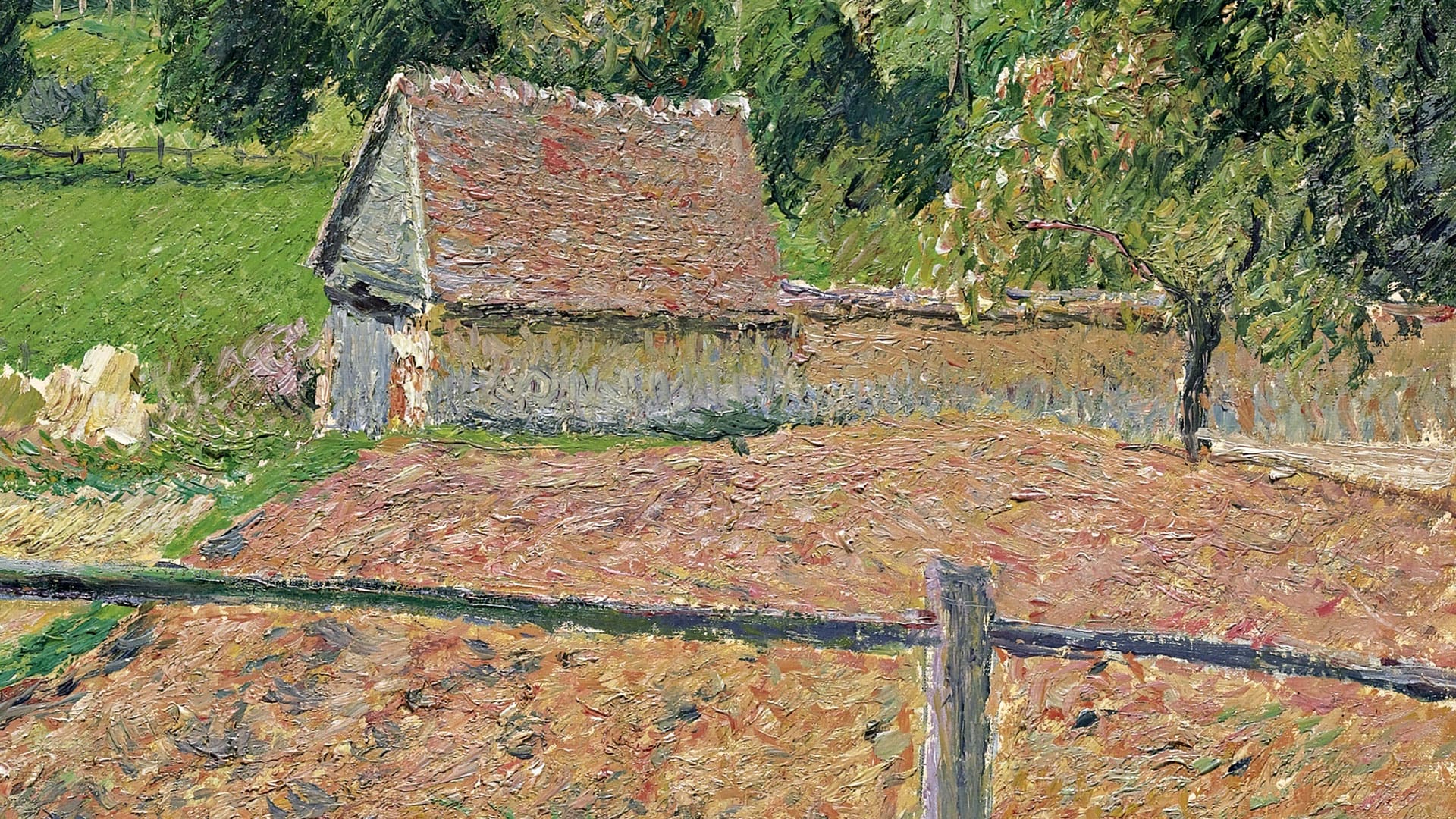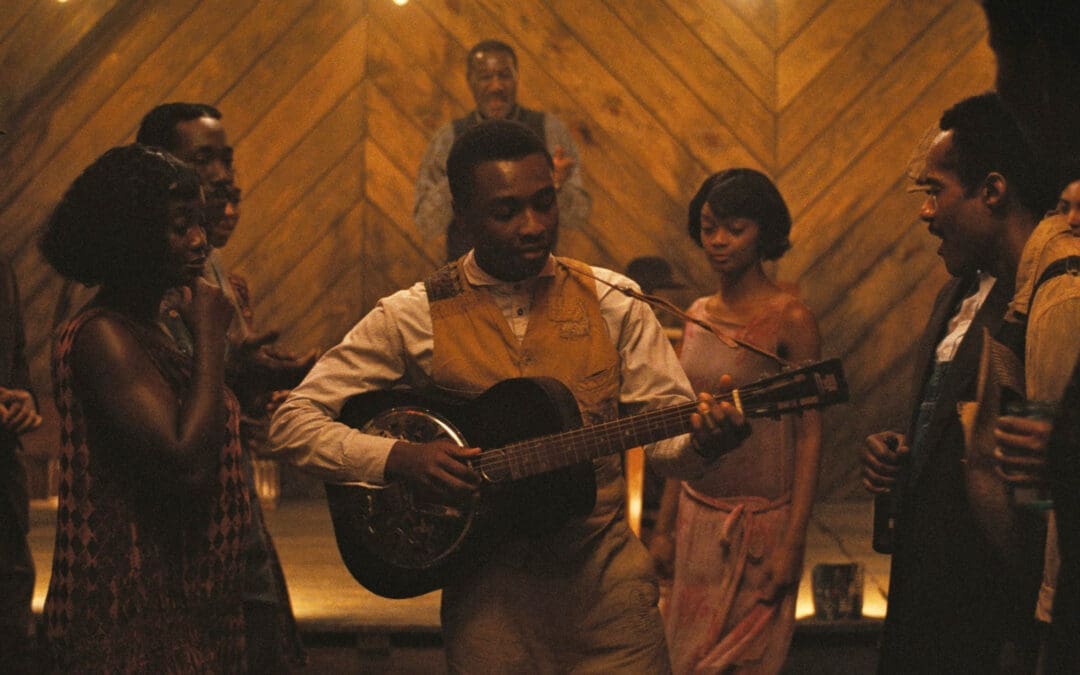I
I kneel down in the dirt and pick up a freshly overturned clod that has fallen out of the post digger. The clod is thick, the size of a small can of soup. At the top is loam, brown and well-hydrated organic matter formed from digested compost. Halfway down, the clod turns a brownish red, the colour of dried blood, as the loam blends into the Penn-channery silt topsoil that makes this place “farmland of statewide importance.” Though it doesn’t look it, this clod came from three years of work regenerating this soil’s nutrients. My volunteer, Teresa (whose name is not really Teresa), a first-grader with thick, Coke-bottle glasses who’s about an inch shorter than her classmates, looks with pride on her work as I hold up the clod to show the rest of her class. Teresa does not know it, but she has dug deep enough with the post digger to expose the wound healing underneath this hard-won good soil.
It’s the beginning of summer in the middle of a global pandemic, and I am standing at the end of a crop row helping a group of six-year-olds plant seasonal crops at Good Soil Farm, LLC, in Emmitsburg, Maryland. Teresa’s group has eleven, one-third of the students visiting the farm today from a local Catholic school. The second group is on the field’s far side with Stephen McGinley, the farm’s founder, visiting sheep and chickens put out to pasture. His wife, Casey-Mae, the farm’s only other employee, is reading Aesop’s pastoral fables to the third group. Although it’s so near the end of the school year and despite having to wear face masks on a humid, eighty-five-degree day, the children are enthusiastic. They ask questions about farming the entire time I’m with them; some are so insightful that I have difficulty thinking of an answer. Teresa’s teacher remarked earlier that this is their year’s most literal field trip. By summer’s end, over one hundred children will have visited the farm as part of this program.
I hold up the brown-red clod so the other students can see while they patiently queue for their turn to use the post digger to make their own hole and transplant a basil or tomato starter. I ask them all what they think the clod looks like. Kevin, the energetic boy next in line, eagerly responds that it looks like poop. The teacher supervising the group looks embarrassed, but I reassure them that Kevin’s right, it does look like poop. That said, does it look like anything else? Does the red soil at the bottom remind anyone of something they’ve learned, maybe about another planet in the solar system? Kevin, chided by his teacher, now raises his hand rather than yelling out a response, and I call on him. Mars! That’s right, Kevin. It’s just like Mars.
⎯⎯
It’s easy to miss just how many fields in northern Maryland have soil the colour of Mars when one’s driving past them at seventy miles an hour on the highway. Years ago, the farmers who owned the land around here were thrust into a production-above-all-else mindset by the USDA, whose conventional practices of plowing, tilling, and spraying chemical fertilizers on the fields aimed to achieve maximal yield on commodity crops like corn, soy, and wheat. The USDA wanted these crops to be grown “from fencerow to fencerow.” This was the era of industrial farming. Stewarding small plots of land was no longer farming’s goal; instead, the American government’s message to its farmers was to “get big or get out.”
Not wanting to get out of a way of life that defined generations of their families, farmers here, along with others all over the United States, followed the USDA’s protocols, which focused more on short-term gains than long-term sustainability. Plowing, tilling, and planting fencerow to fencerow destroyed a significant portion of the land’s topsoil and loam, either through erosion from wind or water or through soil compaction, which reduces the soil’s ability to exchange air and water. Soil compaction occurs most often when heavy farming implements, like tractors, compress the soil; if left compacted, the soil can remain unable to support crop growth for hundreds if not thousands of years. When new pests emerged and started eating their crops, farmers liberally sprayed USDA-approved pesticides, not only destroying their plants’ immune systems but also killing the fields’ microbial and fungal networks that move nutrients quickly throughout the soil, trading nutrients for sugars from plant photosynthesis. Though the results of these actions were not immediately noticeable, within a few years the difficulty of working on this land increased because of topsoil loss, lack of organic matter, dirt compaction, and loss of biodiversity.
Eventually, most farmers, unable to get big, got out. Implementing the USDA’s production-oriented guidelines destroyed their land and failed to make them money. These farmers deserve little if any blame for this. Instead, the fault rests with the technocratic, utilitarian mentality that promised those who tended northern Maryland’s farms wealth and greater yield but instead drove them and their land to destitution. Some fields in this area lost so many nutrients that the soil has nothing left but iron, in which almost nothing grows.
The irony, Stephen tells me, is that the area’s original red clay holds a wealth of nutrients that natural, technologically limited farming techniques can foster. In their four years here, he and his wife have used regenerative agriculture rooted in principles drawn from Catholic theology to build the land back up. They doubled organic matter in their vegetable beds, enabling them to retain over fifty thousand more gallons of water. They broad-fork, rather than till or plow, to combat compaction and aerate the soil, allowing the worms that already live in the ground to till for them, reducing labour. Although the eroded topsoil is lost, the farm’s biodiversity is to the point where they found mushrooms in the fields this year for the first time in the farm’s history—a sign that the fungal networks are returning.
The McGinleys named their farm after Luke 8:4–15’s parable of the sower.
And some seed fell on good soil, and when it grew, it produced fruit a hundredfold. . . . The seed is the word of God. . . . As for the seed that fell on rich soil, they are the ones who, when they have heard the word, embrace it with a generous and good heart, and bear fruit through perseverance. (NABRE)
Matthew 13:24–30’s parable of the good seed and the weeds uses similar imagery: the farmer sowing the good seed is Christ, the good seed is his followers, and the field is the world. In both parables, the well-formed person is made from a combination of seed (the word of God and our receptivity to it) and soil (our acting on that word in the world).
Stephen founded his farm on a premise articulated throughout the Christian tradition but especially in the encyclicals of Popes John Paul II, Benedict XVI, and Francis and in Wendell Berry’s writings: that the way we treat the earth reflects the way we treat human beings and vice versa. If we treat the earth as malleable to our will without an inherent dignity or nature that is a good in and of itself, then we will probably treat other people in our lives the same way. Likewise, if we see others as extensions of our own will and desires, if we instrumentalize them as if they were a tool or a piece of technology, we will also do the same to creation.
The way we treat the earth reflects the way we treat human beings and vice versa.
The government failed decades ago to recommend measures to help its farmers steward their land beyond a production mindset, betraying an inadequate view of the world as pliable to our whims rather than the robust way of seeing it as a God-given gift worthy of respect and love. The government’s rationale for these decisions was to provide more food for the rapidly growing population. This growth strategy assumed an economy of scale in which farmers could incrementally add more crops to their land with little effort and receive greater returns on investment. This failed to profit most farmers both economically and more profoundly: these regulations were instituted with little thought given to whether individual plots could or should sustain even incremental growth, driving a wedge between the land and its stewards. This perspective forced farmers to see the land primarily as a profit source rather than something with its own needs. The soil was transformed into technology.
Passing regulations that rejected the particularity and intimacy required to know the needs of a given piece of land, the government failed philosophically and practically. With food desert proliferation, we are just beginning to see how sparingly food grown according to these mandates feeds us. As agricultural philosopher Masanobu Fukuoka remarked about industrial farming, “Foolishness comes out of looking smart. . . . The more people do, the more society develops, the more problems arise. The increasing desolation of nature, the exhaustion of resources, the uneasiness and disintegration of the human spirit, all have been brought about by humanity’s trying to accomplish something.”
In trying to feed more people, we starved their bodies and their souls. Harming the soil is an ethical matter and, more fundamentally, a cosmological and anthropological one. Our cosmology, the way we see and interpret reality, is inseparable from our anthropology, the way we understand others and ourselves as human beings.
⎯⎯
Dante’s Purgatorio, the second part of the Florentine poet’s Divine Comedy, Outer space, for Dante, contained “living air” stirred up into wind by the turning of the heavenly spheres; this wind makes
the rustlings in the leafy woods,
And the plants, when they’re ruffled, have the power
to fill the air with their fecundity,
which the air in its turning sows abroad
Whence lands below give birth to various trees
of various virtues, fitting for their own
and for their climate’s special qualities.
Once you’ve heard this, it wouldn’t seem indeed
so wonderous down on earth to find a plant
had put down roots from no apparent seed.
The movement of the spheres blows seeds from the Terrestrial Paradise throughout the entire world, and the seeds grow in soil right for them. Dante directly parallels agriculture and humanity: just as all trees come from the Terrestrial Paradise, their seeds dispersed throughout the world by divine power, so too do human beings have roots in the Garden of Eden, from which they were sent throughout the world to “toil [and] . . . eat its yield all the days of [their] life” for their sin (Genesis 3:17). Dante blurs the difference between the origins of adamah (the dirt) and Adam, between humus and human beings.
Dante also recognizes that the soil can draw sinners back to God. Deep within the Terrestrial Paradise is the tree of the knowledge of good and evil, “a plant despoiled of bud / or leaf in any branch” with a “crown” of branches that “spread wider” the higher the tree grows. This cruciform tree, the downfall of humankind, now prefigures Christ’s sacrifice, in which “the seed of righteousness is preserved.”
Just as the seeds of the Terrestrial Paradise’s trees propagate throughout the world, so too do the offshoots of this tree. In an earlier terrace of purgatory, where gluttonous shades atone for their sins, Dante encounters two smaller offspring from the tree, which both reflect its cross-like shape. Wormwood—gall—falls from the mountain through the first tree, laden with apples; the smell of this food and drink stirs up in the emaciated gluttonous a desire to eat the fruit, but they cannot. Instead, they are forced to run around the terrace, passing by the second, likewise apple-bearing tree, where they lift their hands “helplessly toward the leaves.” Like Tantalus, these penitents can never reach the fruit and instead leave “wiser, as if disabused” of the desires that led them to sin in life.
Unlike Tantalus, the gluttonous do not begrudge this punishment. It is, as a shade undergoing purgation says, “our solace,” as their “will now leads us to the tree / as once led the glad Christ to say, ‘My God,’ / when by His opened veins He set us free.” The punishment inspires them to reclaim their reason and realign their wills to follow God’s. The trees lead the sinners toward the sinlessness that Adam possessed before the fall in the Garden of Eden and point the way to the final destination of all purgatory’s penitents: following in the footsteps of the second Adam into Paradise.
⎯⎯
Beyond nature’s ability to point the way to God, cosmology and anthropology’s connection means that the more we work to steward and perfect creation, the more we do the same to our God-given selves. Nurturing the soil in accord with its nature rather than subjecting it to processes that don’t happen naturally not only is good in and of itself but also enables us to grow in virtue through this fully embodied practice.
J.R.R. Tolkien tied the earth’s right cultivation to the acquisition of virtue and to his anthropological principle of human beings as sub-creators. In Tree and Leaf—the collective title for Tolkien’s essay on fantasy “On Fairy-Stories” and its companion short story “Leaf by Niggle”—Tolkien argues that critical to what makes us human is our ability to sub-create through art, especially fantasy. He sees our capacity to tell stories, to create a secondary world of fiction beneath the primary, as reflecting our true nature as created, as “we make in our measure and in our derivative mode, because we are made: and not only made, but made in the image and likeness of a Maker.”
Our sub-creative capabilities draw on and work in communion with nature. Tolkien asserts that
fantasy is made out of the Primary World, but a good craftsman loves his material, and has a knowledge and feeling for clay, stone and wood which only the art of making can give. By the forging of Gram cold iron was revealed; by the making of Pegasus horses were ennobled; in the Trees of the Sun and Moon root and stock, flower and fruit are manifested in glory.
Rightly made fantasy points to and celebrates the inherent good of nature. The best fairy stories are the ones that deal with “simple or fundamental things, untouched by Fantasy, but these simplicities are made all the more luminous by their setting.” To achieve moral perfection, we must imitate God; to imitate God, we must imitate him as creator; to imitate him as creator means we must imitate his love for creation.
“Leaf by Niggle” takes these tenets to their logical conclusion: the imitative love of nature through sub-creation inspires an actual cultivation of the soil that becomes self-perfective. Tolkien’s allegorical short story centres on Niggle, a kind-hearted if morally middling “small man” who constantly puts off preparing for a long journey. He does not know when his journey will begin, only that it’s a long way off but approaching faster than he’d like. His one love is painting. Niggle dreams of painting an enormous picture of a tree, with every leaf beautifully detailed. As he paints the tree’s leaves, the picture grows bigger—he imagines he will add distant mountains and forests behind the tree.

Scott Erickson, 2021
Although he hopes to complete his picture before beginning his journey, Niggle lacks the perseverance to paint consistently. His neighbour Parish frequently interrupts his work with inane conversation. One day, as Niggle is finally motivated to paint, Parish bursts in and asks Niggle to find the doctor and the builder in the next town over to help his wife and his house, both of which have been adversely affected by recent flooding. Niggle begrudgingly does so. After a week without hearing from either the doctor or the builder, Niggle is visited by the local home inspector, who takes Niggle’s pictures, canvases, and paint to fix Parish’s house and roof just as a driver arrives to take Niggle on his journey. Niggle has no time to pack and soon loses the little luggage he does bring, so he is sent to a workhouse to do hard manual labour.
After being hospitalized from overwork, Niggle is sent on to “the next stage” by two mysterious Voices: one harshly reviews Niggle’s failures, while the other intercedes on Niggle’s behalf. This “next stage” is a house in the countryside—and not just any countryside, but the same pastoral scene as the one from Niggle’s painting. His tree, his forest, his mountains—all are there. Niggle realizes the Voices have sent him here to steward this land, but he knows that he cannot do it alone. He needs Parish, who knows “lots of things about earth, plants, and trees. . . . This place cannot be left just as my private park. I need help and advice: I ought to have got it sooner.”
When Parish arrives, the pair work together to fill out the corners of the land left unfinished in Niggle’s picture. Through this work, the two reconcile. Eventually, Niggle feels drawn to the mountains to become a shepherd, but Parish stays behind to wait for his wife. Niggle and his paintings are forgotten in his home village, but his work is celebrated by the two mysterious Voices, who use the countryside Niggle and Parish cared for to introduce travellers to the mountains. The story concludes with the naming of this land: Niggle’s Parish.
Although Tolkien despised allegory, “Leaf by Niggle” clearly represents the Christian hope of life, death, purgation, and happiness in heaven. Like Dante, Tolkien sees nature as critical in bringing people closer to God, but unlike Dante, Tolkien emphasizes humanity’s cultivation and stewardship of nature as a means of sanctification. In Purgatorio, God sent the twin trees to the gluttons’ terrace to teach purgatory’s penitents. The divinely just and merciful Voices in “Leaf by Niggle” instead use Niggle’s painting, his sub-creation, his celebration of nature, to heal and purify him, Parish, and the others in the workhouse whom the Voices send there. Tolkien pushes us to consider that the fruit of the vine and the work of human hands we foster here on earth will not pass away after death, but that God may use the good things that we sub-create in the world to come. Tolkien challenges us to contemplate the inseparability of the new heavens and the new earth.
⎯⎯
Dante’s and Tolkien’s purgatorial stories illuminate the critical principles of Christian agriculture. Purgatorio emphasizes that nature and human beings share the same origins, that the fates of both are indissolubly tied together, and that nature is a gift given by God that points the way to him. Tree and Leaf illustrates that humanity’s sub-creative capacity at its best works in tandem with and toward the enlargement (not the domination) of nature; likewise, it suggests that God incorporates into the eschaton the love we show to creation through our own sub-creation. These convictions form the basis for a robust regenerative agriculture like the one practiced at Good Soil Farm.
It is imperative to raise children according to these principles. Few would debate that Western society is undergoing a moment of intense and painful transition in all its facets—economic, political, moral, and beyond. With that comes intense fear and anxiety, but also unparalleled hope. Whatever the world transforms into in the coming years, we have a duty to form those to whom we are most educationally responsible, our children, to have a cohesive view of what it means to be human that properly situates humanity in relation to nature. The dignity of humankind and the dignity of nature are undeniable and unmalleable.
This is why, amid the heat of summer, uncomfortable masks, stringent distancing mandates, and the occasional bug thrust in my hand or mulch thrown at me by a rowdy student, I hold up the clod of brown-red dirt to Teresa and her class. If I can help them understand now how the soil here was harmed and why that hurts not only our food but us as well, then there is hope they will steward our world wisely into an uncertain future.
In our hands, we hold the good seed of the truth. The field we must sow it in is the world, and we must hope and pray that the ground is good soil.



